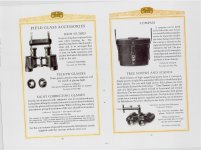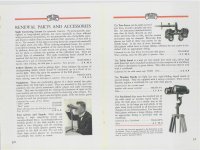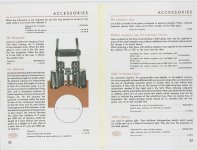Hermann
Well-known member

I've got a question on the 10x30 IS that arose from the current thread on the 8x25 IS. I decided to open a new thread because I didn't want to derail that thread which I think focuses on some very interesting aspects on the "influence of human factors on our seeing experience", as etudiant put it.
The background is that I'm seriously thinking about getting a stabilized Canon myself, and it'll have to be the 10x30 IS rather than the 10x42 IS, despite the much poorer build quality of the 10x30 IS. The reasons are that I won't be able to use any of the Canons on days when I can't use my contacts as the dioptre correction range is too small (only +/- 3 diopters), and in addition the 10x42 is just too heavy; I wouldn't be able to carry (and use) it all day because of my back problems. In addition it seems to me the Canons are best regarded as expendable bins - when they break you might as well throw them away, and the 10x30 is relatively cheap compared to the 10x42.
Anyhow, Binastro wrote:
Can you please elaborate a bit on this? I know Kimmo found Canon had improved the 10x42 IS in some way, but what (if any) changes are there in the 10x30 IS?
Also, is there anyone here with some experience of the latest versions of the 10x30 IS in the field? I know Tobias Mennle was very critical of the build quality of the 10x30 in his review (cf. http://www.greatestbinoculars.com/allpages/reviews/canon/Canon IS 10x/CanonIS.html), and some older versions I've seen were, well, pretty awful in that respect. What are the latest versions like?
BTW, the reason for my new interest in the Canon IS is that I met an old birder on my local patch a couple of weeks ago who used the 10x30, so I had a chance to use his pair for a quick trial. And even though his pair wasn't in a very good condition (with soiled lenses and so on) I definitely got more detail on the birds than with the Nikon 10x42 SE I was carrying. A lot more detail.
Hermann
The background is that I'm seriously thinking about getting a stabilized Canon myself, and it'll have to be the 10x30 IS rather than the 10x42 IS, despite the much poorer build quality of the 10x30 IS. The reasons are that I won't be able to use any of the Canons on days when I can't use my contacts as the dioptre correction range is too small (only +/- 3 diopters), and in addition the 10x42 is just too heavy; I wouldn't be able to carry (and use) it all day because of my back problems. In addition it seems to me the Canons are best regarded as expendable bins - when they break you might as well throw them away, and the 10x30 is relatively cheap compared to the 10x42.
Anyhow, Binastro wrote:
The optical quality and stabilisation of these Canon image stabilised binoculars does seem to vary, and I think that the 10×30 has had several changes in stabilisation method.
Can you please elaborate a bit on this? I know Kimmo found Canon had improved the 10x42 IS in some way, but what (if any) changes are there in the 10x30 IS?
Also, is there anyone here with some experience of the latest versions of the 10x30 IS in the field? I know Tobias Mennle was very critical of the build quality of the 10x30 in his review (cf. http://www.greatestbinoculars.com/allpages/reviews/canon/Canon IS 10x/CanonIS.html), and some older versions I've seen were, well, pretty awful in that respect. What are the latest versions like?
BTW, the reason for my new interest in the Canon IS is that I met an old birder on my local patch a couple of weeks ago who used the 10x30, so I had a chance to use his pair for a quick trial. And even though his pair wasn't in a very good condition (with soiled lenses and so on) I definitely got more detail on the birds than with the Nikon 10x42 SE I was carrying. A lot more detail.
Hermann








